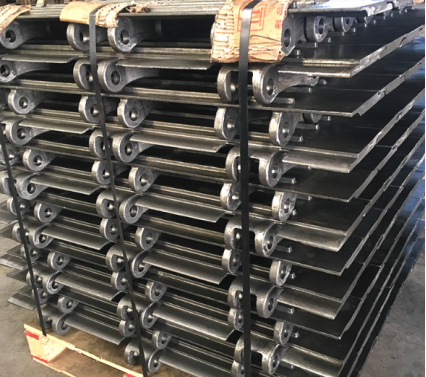The Process and Technology of Cast Steel Production
Casting Process
The production of cast steel generally involves the following processes: mold making, melting and casting, cleaning and finishing, heat treatment, and machining.
· Mold Making: Molds are designed and manufactured according to the shape, size, and structural requirements of the component.
· Melting and Casting: Appropriate melting equipment and casting processes are selected to melt the metal and pour it into the mold. After solidification, the casting is removed.
· Cleaning and Finishing: Casting sand and other impurities are removed from the mold, and the casting is trimmed and polished to achieve the desired surface finish and dimensional accuracy.
· Heat Treatment: Heat treatments such as quenching, tempering, normalizing, and martempering are applied to improve the physical and chemical properties of the casting.
· Machining: Machining processes are used to achieve the final dimensions and tolerances of the cast steel component.
Material Selection for Cast Steel
Steel is the primary material used in cast steel production. The choice of steel depends on factors such as the shape, size, quality requirements, and operating environment of the component. Properties such as strength, toughness, corrosion resistance, wear resistance, and thermal stability are considered. Additionally, the characteristics and limitations of different steels during melting, casting, and heat treatment must be taken into account.
Casting Methods
Casting is a core process in cast steel production. Common casting methods include sand casting, shell molding, and investment casting. Sand casting is the most basic method, offering wide applicability and cost-effectiveness. Shell molding involves the use of a sand-bonded resin coating on the pattern to create the mold cavity, resulting in high-precision castings with a smooth surface and no internal porosity. Investment casting, also known as the lost wax process, involves creating a wax pattern that is coated with refractory material and then melted out, leaving a cavity for the molten metal.
Heat Treatment of Cast Steel
Cast steel components often undergo various heat treatment processes to improve their physical and chemical properties. Common heat treatments include quenching, tempering, normalizing, and martempering. Quenching increases the hardness of the casting, while tempering improves toughness.
Future Trends in Cast Steel Production
With advancements in technology and increasing demands for efficiency, quality, and environmental protection, the cast steel industry is continually evolving. Future trends include a focus on high efficiency, precision, automation, and environmental sustainability.
Conclusion Cast steel components play a vital role in various industries, and their production involves a complex series of processes and technologies. By understanding the processes of mold making, melting, casting, heat treatment, and machining, as well as the factors influencing material selection and future trends, one can gain a comprehensive understanding of cast steel manufacturing.



